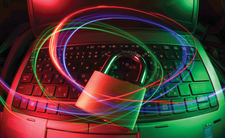Security audits with Lynis
Professional Hardening

© Photo by FLY:D on Unsplash
The complexity of modern distributions offers many potential attack vectors for malware. Lynis lets you find these vulnerabilities before an attacker does.
Virtually nobody uses a computer without Internet access. Unfortunately, the network of networks is teeming with malicious programs that exploit vulnerabilities in operating systems, firmware, and application programs looking to inject malware or steal personal data.
Sys admins protect their systems against these attacks as part of their daily grind. Home users also need to protect their systems by keeping their computers up to date and running an occasional security scan to detect any vulnerabilities. Lynis [1], a free software tool from CISOfy, covers a wide range of problem scenarios and lets you perform regular system checks in no time at all.
First Launch
Lynis, a command-line program, comes with a collection of scripts for Unix-style systems. These scripts check various vulnerable system components for insecure settings and display color-coded results.
[...]
Buy this article as PDF
(incl. VAT)
Buy Linux Magazine
Subscribe to our Linux Newsletters
Find Linux and Open Source Jobs
Subscribe to our ADMIN Newsletters
Support Our Work
Linux Magazine content is made possible with support from readers like you. Please consider contributing when you’ve found an article to be beneficial.

News
-
Fedora 42 Available with Two New Spins
The latest release from the Fedora Project includes the usual updates, a new kernel, an official KDE Plasma spin, and a new System76 spin.
-
So Long, ArcoLinux
The ArcoLinux distribution is the latest Linux distribution to shut down.
-
What Open Source Pros Look for in a Job Role
Learn what professionals in technical and non-technical roles say is most important when seeking a new position.
-
Asahi Linux Runs into Issues with M4 Support
Due to Apple Silicon changes, the Asahi Linux project is at odds with adding support for the M4 chips.
-
Plasma 6.3.4 Now Available
Although not a major release, Plasma 6.3.4 does fix some bugs and offer a subtle change for the Plasma sidebar.
-
Linux Kernel 6.15 First Release Candidate Now Available
Linux Torvalds has announced that the release candidate for the final release of the Linux 6.15 series is now available.
-
Akamai Will Host kernel.org
The organization dedicated to cloud-based solutions has agreed to host kernel.org to deliver long-term stability for the development team.
-
Linux Kernel 6.14 Released
The latest Linux kernel has arrived with extra Rust support and more.
-
EndeavorOS Mercury Neo Available
A new release from the EndeavorOS team ships with Plasma 6.3 and other goodies.
-
Fedora 42 Beta Has Arrived
The Fedora Project has announced the availability of the first beta release for version 42 of the open-source distribution.

